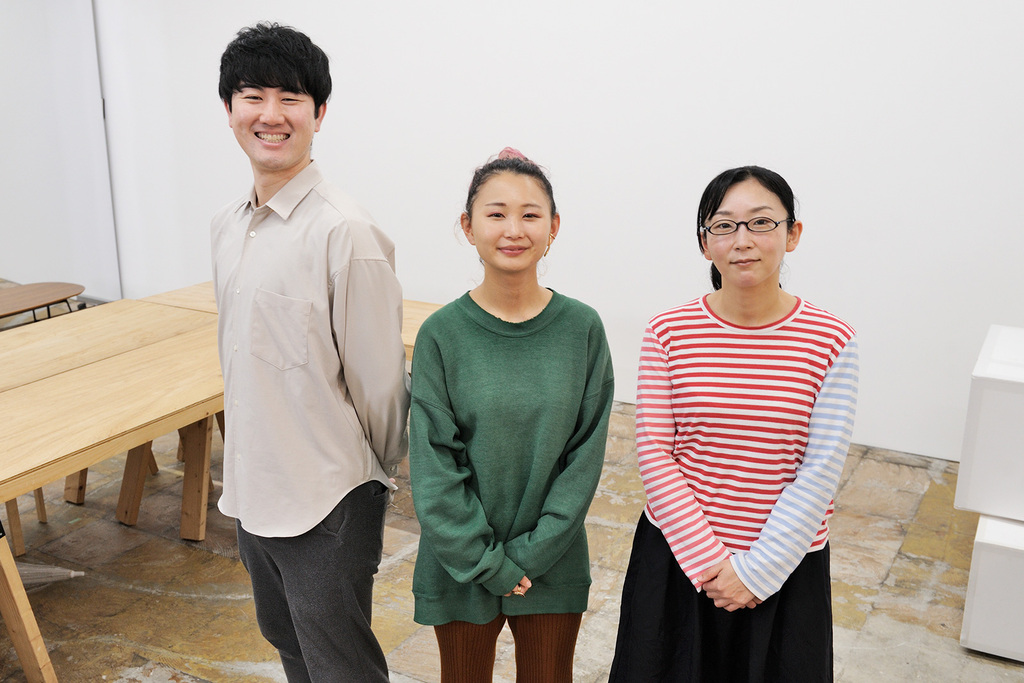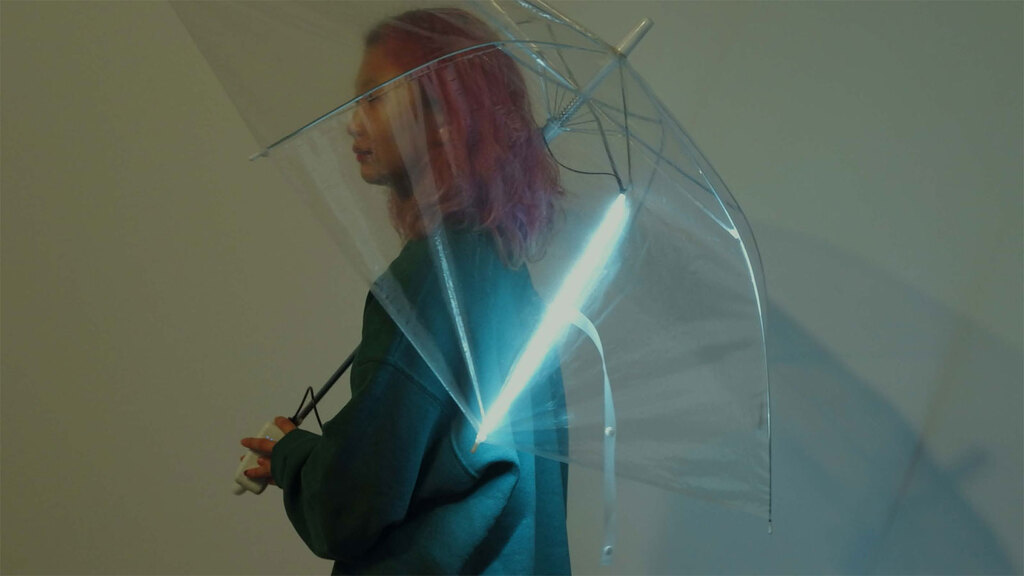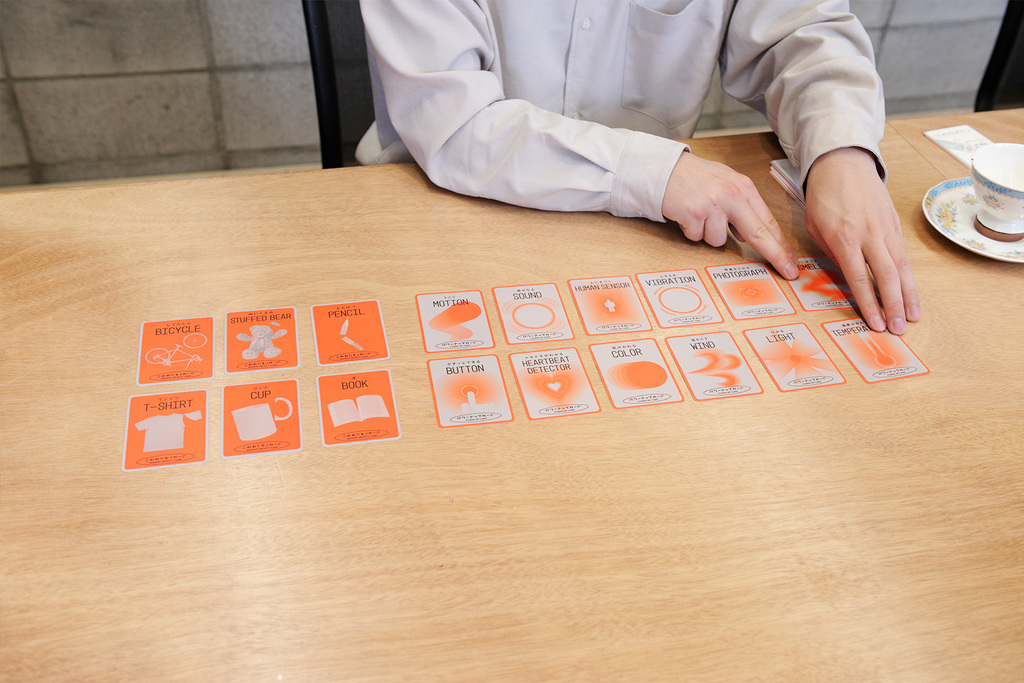Note: This website was automatically translated, so some terms or nuances may not be completely accurate.
Expanding "Upcycling" as an Alternative Approach to Environmental Solutions Through Technology × Tradition. Dentsu Lab Tokyo's "UP-CYCLING POSSIBILITY" Project (Part 2)
Dentsu Lab Tokyo, an R&D organization integrating creative research, planning, and development, is currently running the "UP-CYCLING POSSIBILITY" project. This initiative creates upcycled products by combining the traditional Japanese technique of kintsugi with technology.
We interviewed project leader Kana Nakanishi, who just wrapped up an exhibition showcasing the project's results, along with members involved in the creative work. In Part 2, we spoke with Communication Planner Koshi Hirohata and Creative Technologist Momoka Nakayama.

Technology itself is merely a means to move people's hearts
Q. First, could you tell us what kind of work Mr. Hirohata and Ms. Nakayama typically do? Please also share how you became involved in this project.
Q. Hirohata-san, you designed the overall concept for the project and exhibition, including the copywriting, right?

Reviving Unwanted Items, Cultivating Ideas
Q. Mr. Nakayama, you created the "Light-Up Umbrella" by upcycling broken umbrellas, which is also displayed at the event. Where did this idea come from?


Q. I hear you prepared an experiential "Upcycle Invention Game" at the venue for the exhibition. What led to planning this?


We want to foster empathy and potential for upcycling
Q. Please share your impressions of the exhibition, your thoughts on participating in the project, and your future outlook.

Broken items or things that seem worthless at first glance can be reborn with new value when combined with something else. Upcycling shares similarities with the process of generating business ideas, doesn't it?
The information published at this time is as follows.
Was this article helpful?
Newsletter registration is here
We select and publish important news every day
For inquiries about this article
Author

Nakano Kana
Dentsu Inc.
Dentsu Lab Tokyo
Researcher
Our specialty lies in leveraging insights gained from researching domestic and international technologies to shape the future use of technology and transformations in communication into tangible experiences. Examples include "iButterfly" (2010), where users catch AR butterflies with coupons via smartphone; "necomimi" (2011), a cat-ear communication tool using brainwaves; mononome (2014), an IoT device visualizing the feelings of objects; Onigilin (2016), a mindfulness meditation training device; and the "UP-CYCLING POSSIBILITY" project (2023), a future kintsugi technique embedding functionality into broken objects. Hobbies include reading books about living creatures and food, and wandering around cities.
Articles by this person

Natsuki Tomoda
Dentsu Inc. / Dentsu Lab Tokyo
Creative Planning Division 4
Graphic Designer, Art Director
Graduated from Musashino Art University. Major works include: cresc.(FujiFilm) / The 9th Seiichi Hoshi Award (Nikkei Newspaper) / Yebisu Beer (Annual Advertising) / Marugoto Aomori (Aomori Prefectural Government). Hobbies include glass craft and grafting cacti. Kokuyo Design Award 2020 Grand Prix. Asahi Advertising Award Excellence Prize. Awarded in the Design category at D&AD, Adfest, and Spikes Asia.
Articles by this person

Expanding "Upcycling" as an Alternative Approach to Environmental Solutions Through Technology × Tradition. Dentsu Lab Tokyo's "UP-CYCLING POSSIBILITY" Project (Part 2)

Expanding "Upcycling" as an Alternative Approach to Environmental Solutions Through Technology × Tradition. Dentsu Lab Tokyo's "UP-CYCLING POSSIBILITY" Project (Part 1)

Kou Mikuni
Dentsu Lab Tokyo
Creative Technologist, Product Designer
Withdrew from doctoral program in mechanical engineering. Finalist for the LEXUS Design Award 2022. Engages in creation that values human emotion and curiosity about nature, from planning and design to 3D modeling and coding. Loves VTubers.
Articles by this person

Expanding "Upcycling" as an Alternative Approach to Environmental Solutions Through Technology × Tradition. Dentsu Lab Tokyo's "UP-CYCLING POSSIBILITY" Project (Part 2)

Expanding "Upcycling" as an Alternative Approach to Environmental Solutions Through Technology × Tradition. Dentsu Lab Tokyo's "UP-CYCLING POSSIBILITY" Project (Part 1)

Hirohata Kōshi
Dentsu Inc.
CDC Dentsu Lab Tokyo
Technology Planner
Born in Kanagawa Prefecture in 1992, spent childhood in the United States. Studied mechanical engineering and sensory design in university and graduate school, developing an interest in communication between products, technology, and people. Alongside product development, involved in building maker communities such as fab spaces and shared houses. Exhibited at SXSW for three consecutive years, including during student years. Hobbies include collecting street arrows; favorite book is SLAM DUNK.
Articles by this person

Expanding "Upcycling" as an Alternative Approach to Environmental Solutions Through Technology × Tradition. Dentsu Lab Tokyo's "UP-CYCLING POSSIBILITY" Project (Part 2)

Expanding "Upcycling" as an Alternative Approach to Environmental Solutions Through Technology × Tradition. Dentsu Lab Tokyo's "UP-CYCLING POSSIBILITY" Project (Part 1)

Momoka Nakayama
Dentsu Inc.
CX Creative Center
Creative Technologist
Since my student days, I've researched what movements make people feel like living beings. I created and presented robotic works. Leveraging my exhibition experience at SXSW/CES, I handle everything from interactive museum concept creation to digital planning, UI/UX design, and spatial design. I aim to capture the thrilling experiences hidden in everyday life, refine them, and elevate them into new experiences. Major Exhibitions: SXSW 2017, CES 2018, Roppongi Art Night 2019, MIDTOWN DESIGN AWARD 2019, Kudoyama Art Festival 2021, etc.


